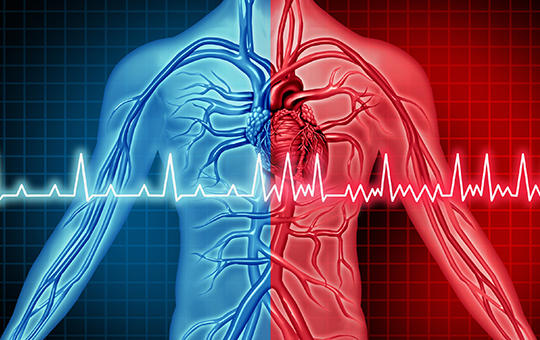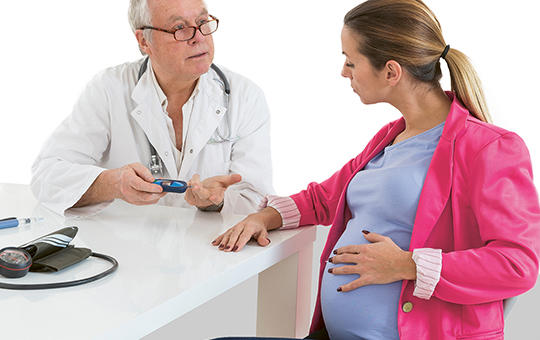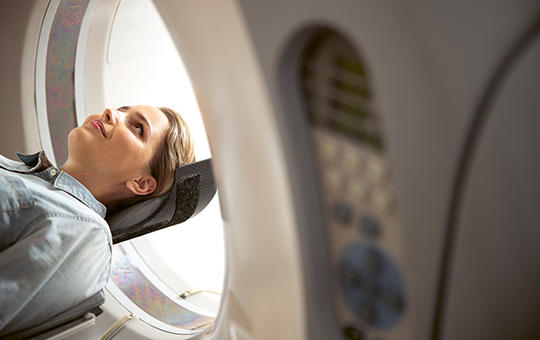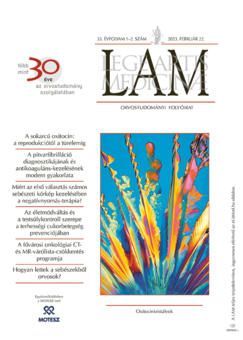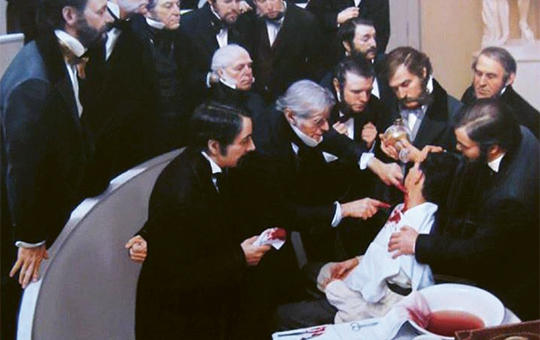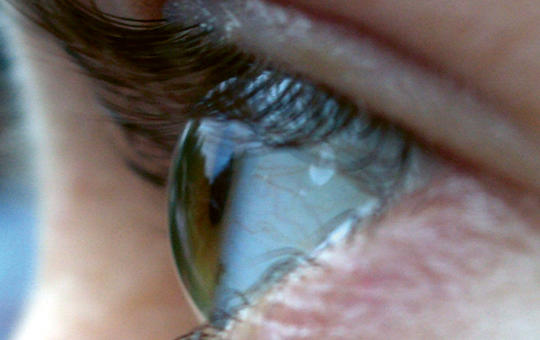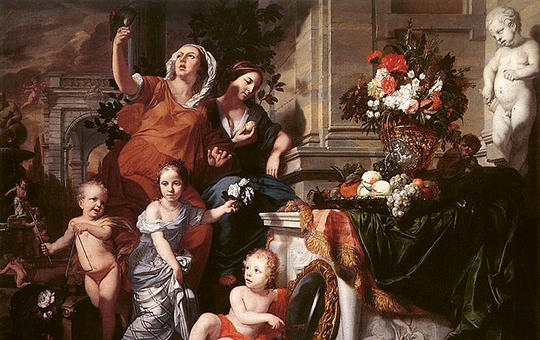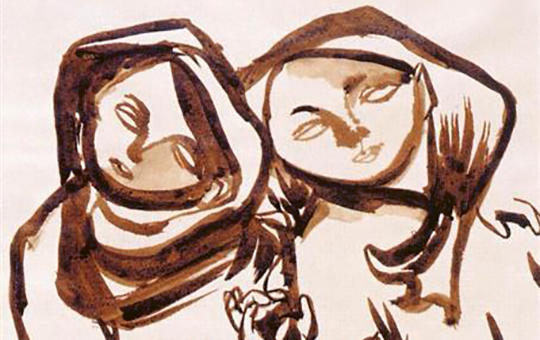The eLitMed.hu medical portal uses computer cookies for convenient operation. Detailed information can be found in the Cookie-policy.
Lege Artis Medicinae - 2023;33(01-02)
Content
[Multi-faceted oxytocin: from reproduction to the patience]
[The aim of this study is to provide an overview of what we know today about the production and function of oxytocin in human organism, based on summaries of studies on oxytocin. The current overall picture of oxytocin’s highly diverse functions is that oxytocin has a coordinating function in human development, acting as a catalyst in social interactions. ]
[Modern practice of diagnostics, anticoagulant treatment and maintaining patient adherence in atrial fibrillation]
[Atrial fibrillation (AF) is the most common persistent arrhythmia, however in a third of the cases, the patient remains asymptomatic. Undiagnosed and undertreated atrial fibrillation contributes to the development of ischemic stroke. Thus, the screening of AF carries the possibility of earlier arrhythmia treatment and the prevention of stroke and death. In the last decade we have witnessed significant progress in the development of the everyday use digital devices. These can provide new opportunities for the timely recognition of cardiac arrhythmias. After early diagnosis and initiation of optimal medical treatment, maintaining patient adherence is inevitable for an optimal therapy. A shared decision-making that involves the patients discussing the options for the anticoagulation therapy is a key to proper assessment of the attitudes and has important potential in increasing adherence. The aim of our review is to provide up-to-date practical guidance on the appropriate use of digital devices in the case of cardiac arrhythmias, as well as give a summary overview of the challenges of increasing adherence to anticoagulants used in daily practice.]
[The role of lifestyle changes and weight control in primary and secondary prevention of gestational diabetes]
[Gestational diabetes is one of the most common complications in pregnancy. It is still a field of intensive research nowadays. Treatment and follow-up of this condition got great importance in the last decades. Despite of these there is little information available about preventive possibilities of gestational diabetes and later developing type-2 diabetes. This review on basis of recent studies tries to highlight that unbeneficial lifestyle factors play a higher role in the development of illness than genetic predisposition. Achieving and maintaining an ideal body weight, improving insulin sensitivity of the body with low glycaemic index diet and aerobe training play key role in preserving health of women with previous gestational diabetes.]
[Why the negative pressure wound therapy is the first choice in several conditions of general surgical practice? Review]
[Negative pressure wound therapy (NPWT) is a widely used technique, mostly for the treatment of complicated wounds, soft tissue infections, septic abdominal complications, abdominal compartment syndrome, oesophageal and colorectal anastomosis leakage. Unfortunately, in clinical practice, it is often used only as “ultimum refugium”. The quality of life of patients with NPWT is better than during conventional treatment and is well-tolerated. On the basis of its good effects NPWT shortens therapeutic time, the early and late results are promising and it is more cost-effective. The authors emphasize that vacuum therapy with well-defined indications should be started as soon as possible. After analysing the quality of life during NPWT, length of healing period, cost-effectiveness, success rate and evidence, it is highlighted that NPWT could be the first-choice therapy in many cases.]
[Significance, midterm results and experiences of the Budapest oncology CT and MR waiting lists reduction program]
[ BACKGROUND – High-value medical imaging diagnostic procedures are key elements of the diagnostic process of patients with suspected oncological disease and in determining the effectiveness of the initi - ated therapy. In Hungary, due to the high diagnostic demands, diagnostic waiting lists for computed tomography (CT) or magnetic resonance imaging (MR) are usual ly long and result in less transparent reporting times, even in the case of individuals who are potentially suspected of having a malignant disease, or in the case of the follow-up of effectiveness of treatment of diagnosed cancer patients.
THE AIM OF THE PRESENT STUDY – Midterm analysis of the onco-diagnostic Program in Budapest implemented within the framework of the Healthy Budapest Program (HBP), gain experiences and presentation of underlying health policy processes.
RESULTS – From November 2020 till 31st of December 2022 within the framework of the Program, the Municipality of Bu - dapest has reimbursed 5437 contrastenhanced CT and 2948 MR examinations with “C” or “D” disease diagnosis. Examinations has been financed in a sector-neutral manner to public and private healthcare providers in the so-called ‘BP’ reimbursement category. The report undertaken by Semmelweis University has found, that in Budapest Municipality fund - ed patients, radiological examinations were performed on average 15.2 days sooner (16.1 vs. 31.1 days), than in the case of the National Health Insurance Fund funded patients, the mean waiting time for CT/MR examination was shortened by 13.0 days (4.2 vs. 17.2 days, respectively). In 86% of cases, patients used the Program once, in 14% twice or more. Utilization of the Program shows a significant difference by the different districts of the Capital: the number of cases – originally planned based on demogra phic, prevalence and incidence data, broken down by district – was utilized bet ween 3-45% for CT, and 8-37% for MR cases, respectively, by district residents mainly referred by district outpatient clinic specialists, between the pe - riod of No vem ber 2020 and August 2022.
CONCLUSION – The Program has been utilised in a smaller scale, than it was originally planned before COVID, in terms of its cases. The program has achieved its aim through the reduction of CT and MR diagnostic waiting times and waiting lists, and it has an indirect effect in generally reduc - ing waiting times at medical imaging. However, this is not sufficient to speed up and provide more efficient service for the entire oncology diagnostic process. The re - fore, we wish to further develop the Program in the direction of adding additional diagnostic examinations and developing a patient pathway management module.]
[How the surgeons became medical doctors?]
[Today, it is a self-explanatory fact that surgeons are colleagues of medical doctors, but until the late 1700s, they all worked as guild-members. In the prehistoric times, medicine came to existence as a spiritual and manual activity. The former belonged to religious cults and dealt with “hidden internal” conditions. First Hippocrates’ school based on natural forces opened the way for treatment of the latter diseases and concerned the manual medicine as its own too. Christianity does not have and never ever had a canonised faith-healing practice. Thus, doctors devoted as early Christians practiced Hippocratic medicine from the very beginning of the new religion. Moreover, secular medicine had established itself also among the clergymen. Finally, at the early 1200s it functioned already as a common business, which challenged the Church administration both in theological and religious service issues. Ban on the clergymen opened the way for secular medical education at the universities, nevertheless they rejected any training of inferior manual techniques. As a result, surgery became a guild-members’ business. However, since the early 1700s some talented surgeons started to graduate as distinguished doctors in the medical schools of universities. Finally, the demand for high-quality field surgeons made regular this introduction of surgical medical diploma. Getting rid of rough and harsh hands-on style started 1846 with the first general ether anaesthesia. Ignác Semmelweis proved as early as 1847 how important it was to disinfect the hands of the manual doctors. From 1867, Joseph Lister’s carbolic acid antiseptic procedure made it possible to heal faster the already infected casualties. The next step was the introduction of asepsis and the white colour in operating theatres. The penultimate action of surgeons becoming medical doctors happened in Baltimore/Maryland/USA by the introduction of rubber gloves. Finally, the surgeons’ business entered the 20th century free of stinking, with literally clean hands and in entirely white clothing as the winner of all past developments and future triumphs of medicine. ]
1.
Clinical Neuroscience
Is there any difference in mortality rates of atrial fibrillation detected before or after ischemic stroke?2.
Clinical Neuroscience
Factors influencing the level of stigma in Parkinson’s disease in western Turkey3.
Clinical Neuroscience
Neuropathic pain and mood disorders in earthquake survivors with peripheral nerve injuries4.
Journal of Nursing Theory and Practice
[Correlations of Sarcopenia, Frailty, Falls and Social Isolation – A Literature Review in the Light of Swedish Statistics]5.
Clinical Neuroscience
[Comparison of pain intensity measurements among patients with low-back pain]1.
2.
Clinical Neuroscience Proceedings
[A Magyar Stroke Társaság XVIII. Kongresszusa és a Magyar Neuroszonológiai Társaság XV. Konferenciája. Absztraktfüzet]3.
4.
Journal of Nursing Theory and Practice
[A selection of the entries submitted to the literary contest "Honorable mission: the joys and challenges of our profession" ]5.
Journal of Nursing Theory and Practice
[End of Life and Palliative Care of Newborns in the Nursing Context]




